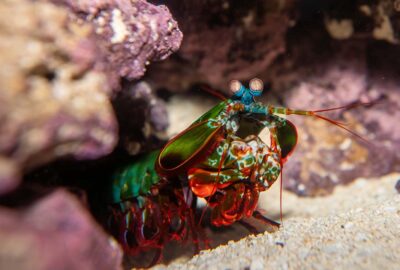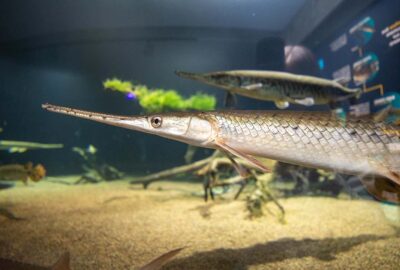These Unique Fish Use Electricity to Communicate
Get to know mormyrids, a.k.a. elephantnose fish, an “ancient” species that you can see at the Aquarium.
By New England Aquarium on Tuesday, September 23, 2025

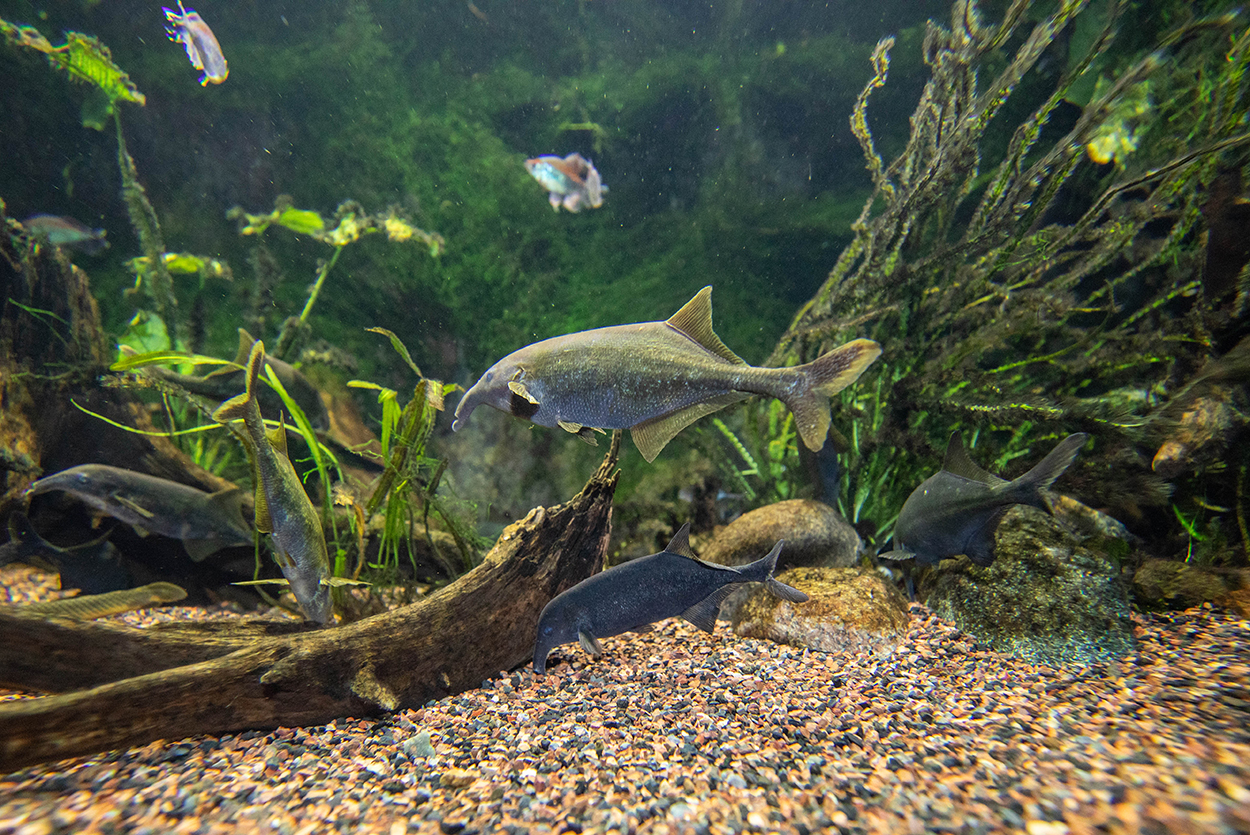
Noise from a small red speaker, held by Senior Animal Care Specialist Allison Waltz-Hill, sounds a bit like static over the radio. But that crackling isn’t coming over the airwaves—using a special tool, Allison is picking up electrical signals emitted by a group of mormyrids, or elephantnose fish.
What’s a mormyrid?
Mormyrids are electric fish, and while they’re often all called elephantnose fish, there are more than 200 different species in the Mormyridae family. All elephantnose fish possess electric organs that can emit electric signals, as well as electroreceptors for “reading” these pulses. The sounds that Allison played over the speaker are the fish communicating using these electric waves. Unlike the pulses put out by other electric fishes, like the electric eel, those emitted by the “weakly electric” elephantnose fish aren’t strong enough to produce a shock.
“It’s sort of like how a bat uses sonar,” Allison explained. Similar to how bats echolocate—using sound waves that bounce off other objects in their environment—by emitting and receiving electric signals, the elephantnose fish can navigate their native river habitats in Africa. They also use these pulses to “talk” with one another. “There are a few other types of fishes that can do what mormyrids do, but not a ton, so it’s a pretty unique way to navigate and communicate.”
With the “mormyrident”—a pair of electrodes attached to a Y-shaped probe—Allison picks up the signals the elephantnose fish are putting out. When a group of fish are between the electrodes, it’s noisy chatter; when Allison can single out a lone fish, a more distinct pulse comes over the speaker.

Reading the signal
Each species of mormyrid emits its own unique electric pulse. The frequency may change, but the pulse waveform remains the same. “You can think of it like how a Pokémon speaks,” Allison said. “They say their name over and over, but how they say it changes based on what they’re trying to communicate. That’s what’s happening with these fish, too.”
Using an oscilloscope, aquarists can also transform the electrical signals into visual waveforms. By doing so, they can classify each individual species of elephantnose fish based on the unique signal they emit. At the Aquarium, the team recently performed a census of all our mormyrids, determining that there are nine different species in the exhibit. Because some of the different species of mormyrid look very similar to one another, using the oscilloscope is a more reliable way to tell them apart.
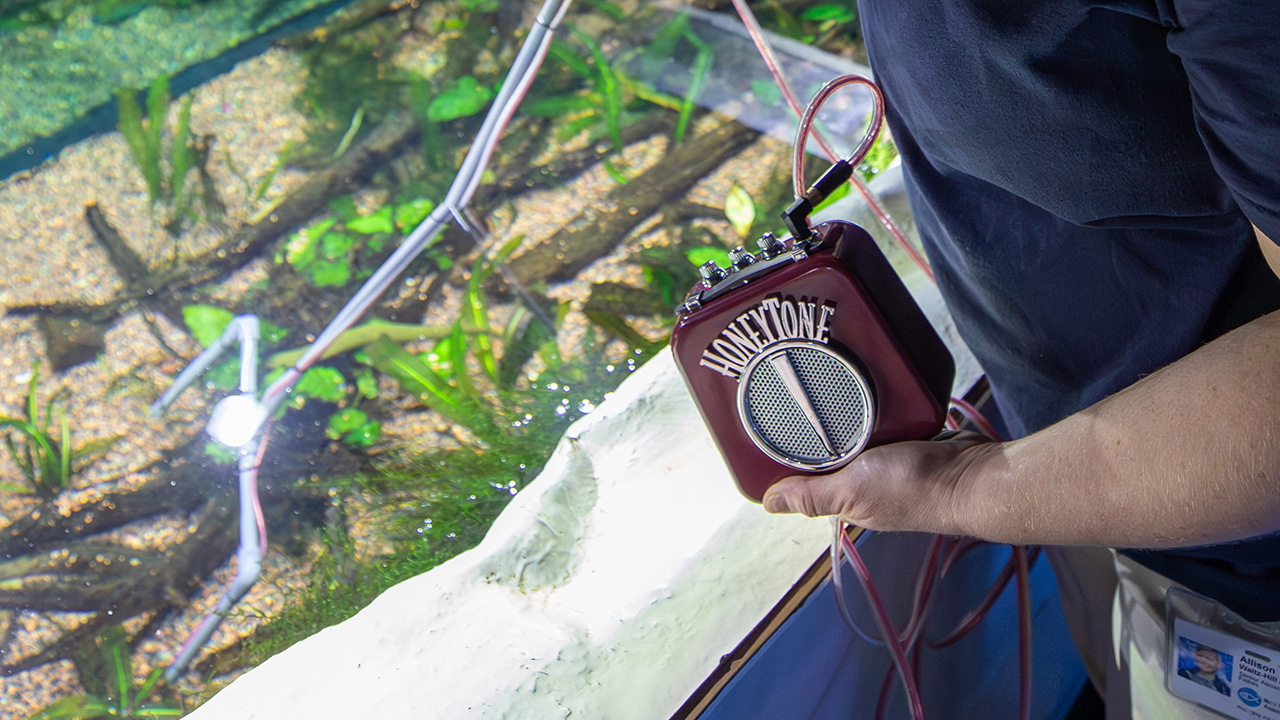
Listen to mormyrid communication!
Hear what Allison captured behind-the-scenes with the "mormyrident" and learn more about the elephantnose fish at the Aquarium.
Fish with brainpower
Making sense of all that chatter means elephantnose fish have a surprising amount of processing power. They have one of the largest brain-to-body ratios of any animal, primarily due to having large cerebellums, the front part of the brain that’s involved with language and reasoning.
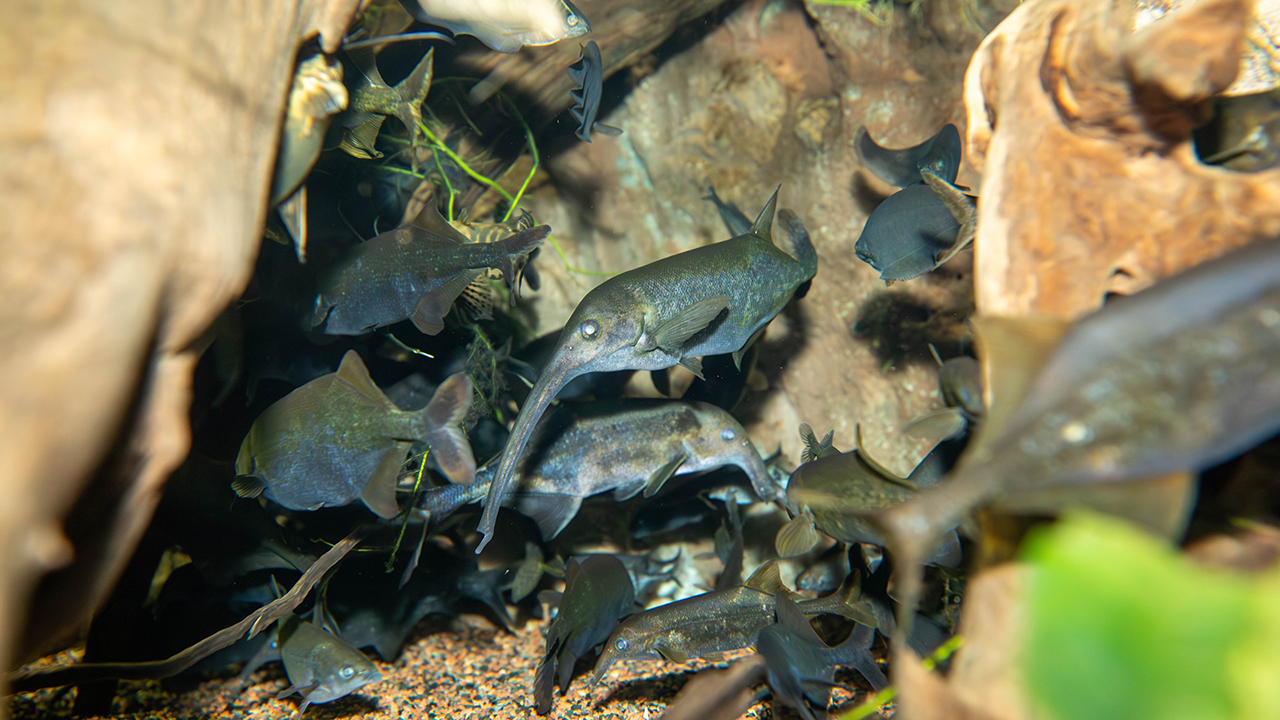
Allison compared it to being a person in the Aquarium on a busy summer day—there’s a lot happening around you, but your brain helps filter out what’s not important so you can talk to the people you’re with or navigate to the next exhibit. “These fish are getting a ton of information, and they have to sort through it,” Allison said, “and we have to do the same things.”
Because of that, mormyrids are of interest for neurological research, and for further insights into disorders that might affect the cerebellum. In the past, students and researchers from outside institutions visited the Aquarium to see mormyrids in a natural setting for this type of work.
“Mormyrids are super smart,” Allison added. “We do enrichment for them, like getting food out of novel items, and they’ll investigate things or swim up and take food out of your hand.”
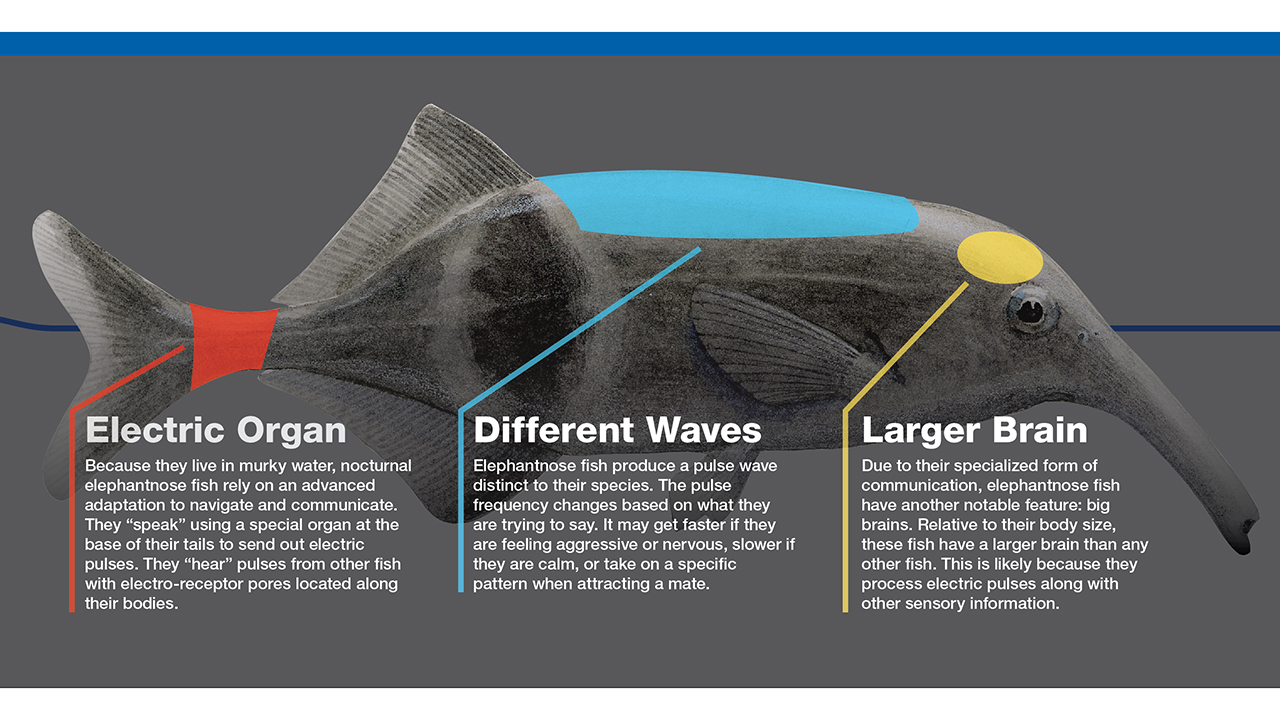
A unique chance to see a unique fish
“We’re actually one of the few public Aquariums that display elephantnose fish, and among those we have the broadest array of species,” Allison said. Along with the group in the African Rivers exhibit, there is one more mormyrid, dolphin-headed elephantfish (Mormyrus rume), in the nearby in our Ancestral Fishes exhibit. That fish can sometimes be spotted nosing around an enrichment device—a visitor favorite is a 20-sided rubber die. “Mormyrid people know about the exhibit because it’s like, the mormyrid exhibit,” Allison added.
If there was any doubt about how Allison and her fellow aquarists feel about mormyrids, a cut-out of an elephantnose fish hung above their workstations confirms: they’re big fans.
“There’s just so much that’s cool about them,” Allison said. “From the moment you look at them you’re like, ‘That’s a crazy-looking fish,’ and then the more you learn, you’re like, ‘Well, now that’s my favorite fish.’”

